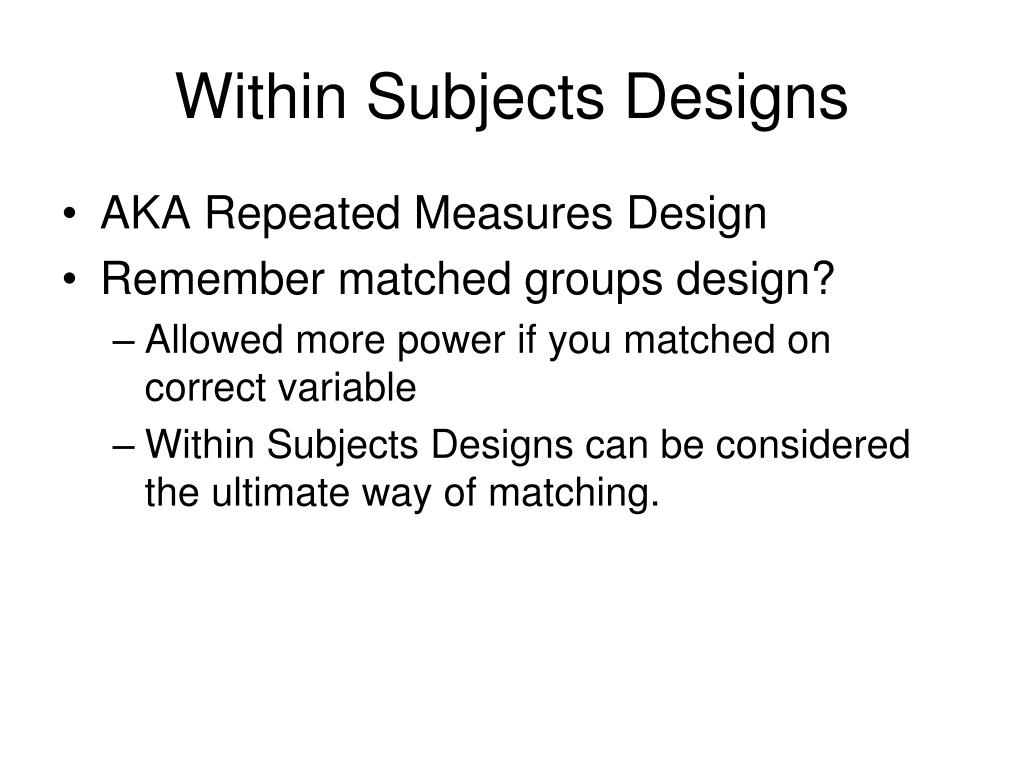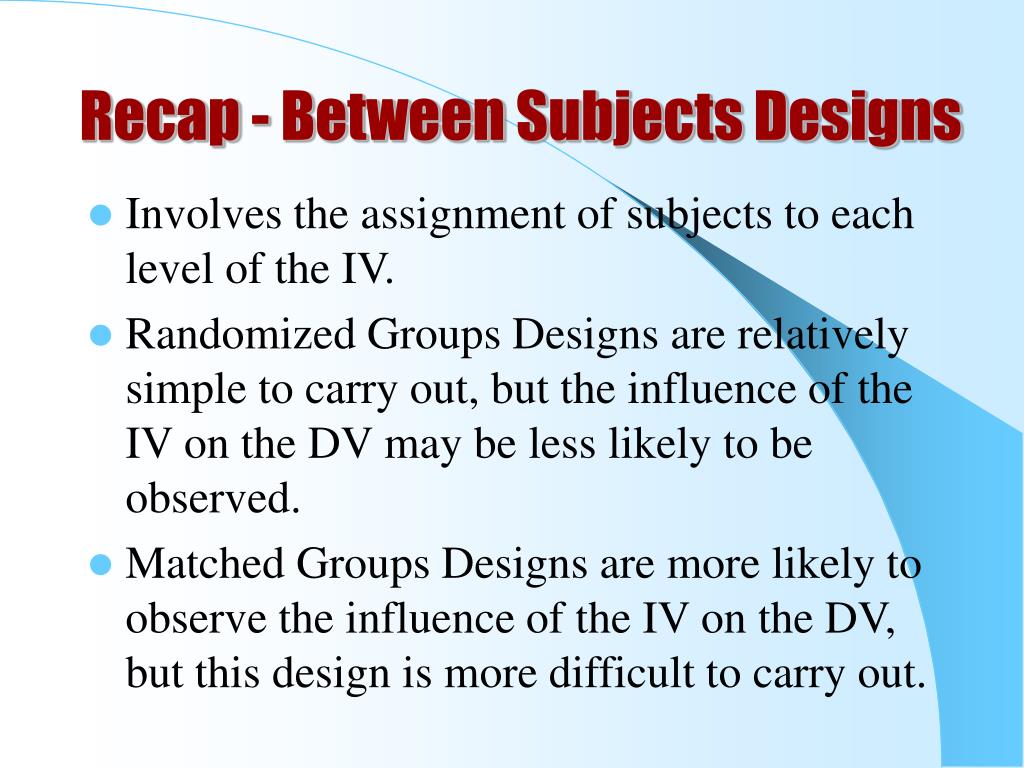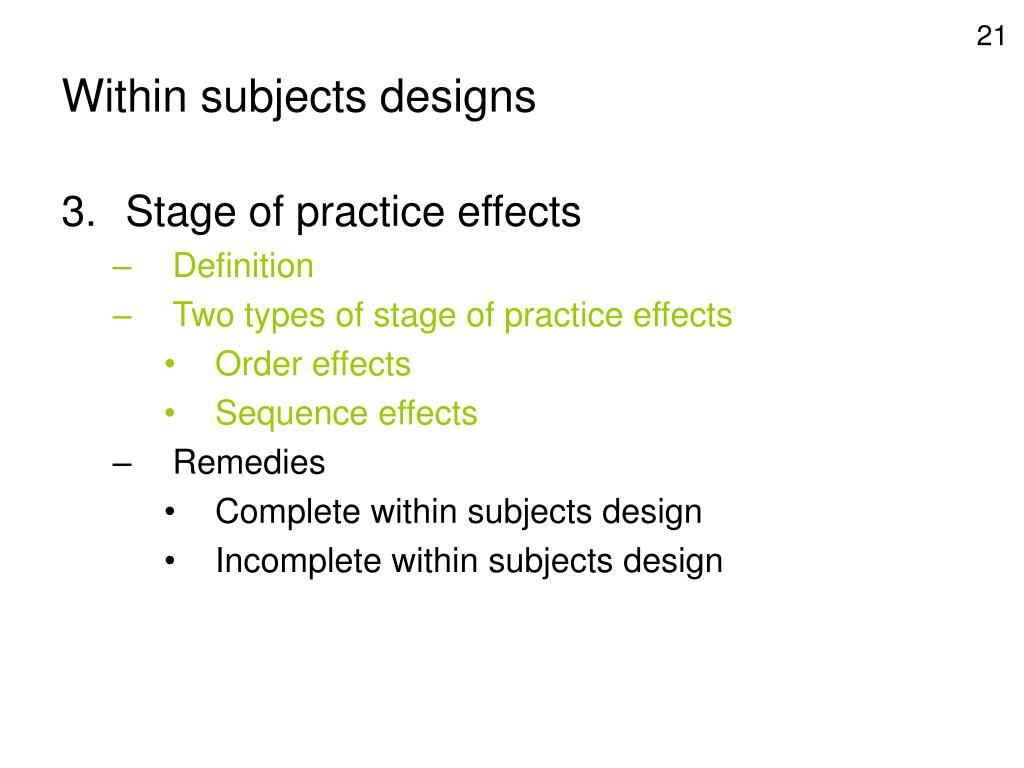Table Of Content

Instead of breaking participants up into two groups, you have all the participants try yoga before taking a memory test. Next, you compare the test scores to determine which type of exercise had the most significant effect on performance on the memory tests. You would shop in both ways with all participants and compare the spending of the control group with that of the experimental group. Of course, the researchers could just as easily administer the drug first and then the placebo. This ensures that every subject acts as their own control, so there are few problems with matching age, gender and lifestyle, reducing the chance of confounding factors.
Uses a Smaller Sample Size

Because individual variation is removed, this study design has little room for error, and researchers can easily detect differences among treatments. Individual participants bring in to the test their own history, background knowledge, and context. One may be tired after a long night of partying, another one may be bored, yet another one may have received a great news just before the study and be happy. If the same participant interacts with all levels of a variable, she will affect them in the same way. The happy person will be happy on both sites, the tired one will be tired on both.
Carryover Effects
Within-subjects designs help you detect causal or correlational relationships between variables with relatively small samples. It’s easier to recruit a sample for a within-subjects design than a between-subjects design because you need fewer participants. Every participant provides repeated measures, making the study more cost effective.

Error
In a mixed factorial design, one variable is altered between subjects and another is altered within subjects. In the realm of research, choosing the right methodology is pivotal for obtaining meaningful results. The within-subject design is one such methodology where participants are exposed to all experimental conditions, allowing for direct comparisons of their responses. Within-subjects design can be useful in experimental research, especially when there is a limited sample size or individual differences between participants must be controlled.
One-Factor Designs
With between-subject design, this transfer of knowledge is not an issue — participants are never exposed to several levels of the same independent variable. In a within-subjects design, each participant experiences all conditions, and researchers test the same participants repeatedly for differences between conditions. In contrast, there are no variations in individual differences between conditions in a within-subjects design because the same individuals participate in all conditions. In a within-subjects design, all participants in the sample are exposed to the same treatments. The goal is to measure changes over time or changes resulting from different treatments for outcomes such as attitudes, learning, or performance.
Within-subject reproducibility varies in multi-modal, longitudinal brain networks Scientific Reports - Nature.com
Within-subject reproducibility varies in multi-modal, longitudinal brain networks Scientific Reports.
Posted: Mon, 24 Apr 2023 07:00:00 GMT [source]
This is true for many designs that involve a treatment meant to produce long-term change in participants’ behavior (e.g., studies testing the effectiveness of psychotherapy). This difficulty is true for many designs that involve a treatment meant to produce long-term change in participants’ behavior (e.g., studies testing the effectiveness of new teaching/advising/counseling techniques). Within-subjects design, also known as repeated measures design, is a type of experimental design in which the same participants are tested under multiple conditions or points in time. This allows researchers to directly compare the responses of each individual, rather than relying on group averages as in between-subjects designs.
It can also be a good way to examine situations in real-world settings, such as to assess the effectiveness of educational programs. In a between-subjects design, one group of participants would do yoga and take a memory test. Since the same individuals participate in all conditions, there will be no effects from variations in individual differences between conditions. Within-subjects studies are typically used for longitudinal studies, as researchers can assess changes within the same group of subjects over an extended period of time. Counterbalancing can be a more convenient option for researchers, as every possible order in which the conditions are presented occurs equally often.
Between-Subject Studies Are Easier to Set Up
How to Write the Method Section of an APA Format Psychology Paper - Verywell Mind
How to Write the Method Section of an APA Format Psychology Paper.
Posted: Tue, 14 Mar 2023 07:00:00 GMT [source]
Participants in all conditions have the same mean IQ, same socioeconomic status, same number of siblings, and so on—because they are the very same people. However, not all experiments can use a within-subjects design nor would it be desirable to do so. A factorial design is a type of experimental design that can look at the effects of two or more independent variables. The primary way that researchers accomplish this kind of control of extraneous variables across conditions is called random assignment, which means using a random process to decide which participants are tested in which conditions. Random sampling is a method for selecting a sample from a population, and it is rarely used in psychological research.
Time-related effects
When participants in a treatment condition take a pill, for example, then those in a placebo control condition would take an identical-looking pill that lacks the active ingredient in the treatment (a “sugar pill”). In research on psychotherapy effectiveness, the placebo might involve going to a psychotherapist and talking in an unstructured way about one’s problems. This is what is shown by a comparison of the two outer bars in Figure 6.2 “Hypothetical Results From a Study Including Treatment, No-Treatment, and Placebo Conditions”. The appropriate statistical test for a within-subjects design depends on the specific research question and the type of data being collected.
Each subject’s performance is thus measured at each of the four levels of the factor, or dose. To compare the spending habits of participants between online and in-person shopping experiences, it’s important to randomize the order in which participants shop. This means some participants would start shopping on an e-commerce site, while others would start at a physical store. Carryover effects are a broad category of internal validity threats that occur when an earlier treatment alters the outcomes of a later treatment. Randomisation means using many different possible sequences for treatments, while counterbalancing means using a limited number of sequences across the group. Many people are not surprised that placebos can have a positive effect on disorders that seem fundamentally psychological, including depression, anxiety, and insomnia.
With three conditions (A, B, C), there would be six different orders (ABC, ACB, BAC, BCA, CAB, and CBA), so some participants would be tested in each of the six orders. With four conditions, there would be 24 different orders; with five conditions there would be 120 possible orders. In a 2x2 design, researchers examine how two independent variables with two different levels impact a single dependent variable. For example, imagine a study where researchers wanted to see how the type and duration of therapy influence treatment outcomes. As seen above, sometimes your independent variables will dictate the experimental design.
This prevents the effects of earlier treatments from spilling over onto later ones. Other unrelated questions are also asked to make sure participants don’t guess the aim of the study. To test the effects of messaging styles on generosity, you compare the willingness to donate across conditions within subjects. This means that researchers must choose between the two approaches based on their relative merits for the particular situation.

No comments:
Post a Comment